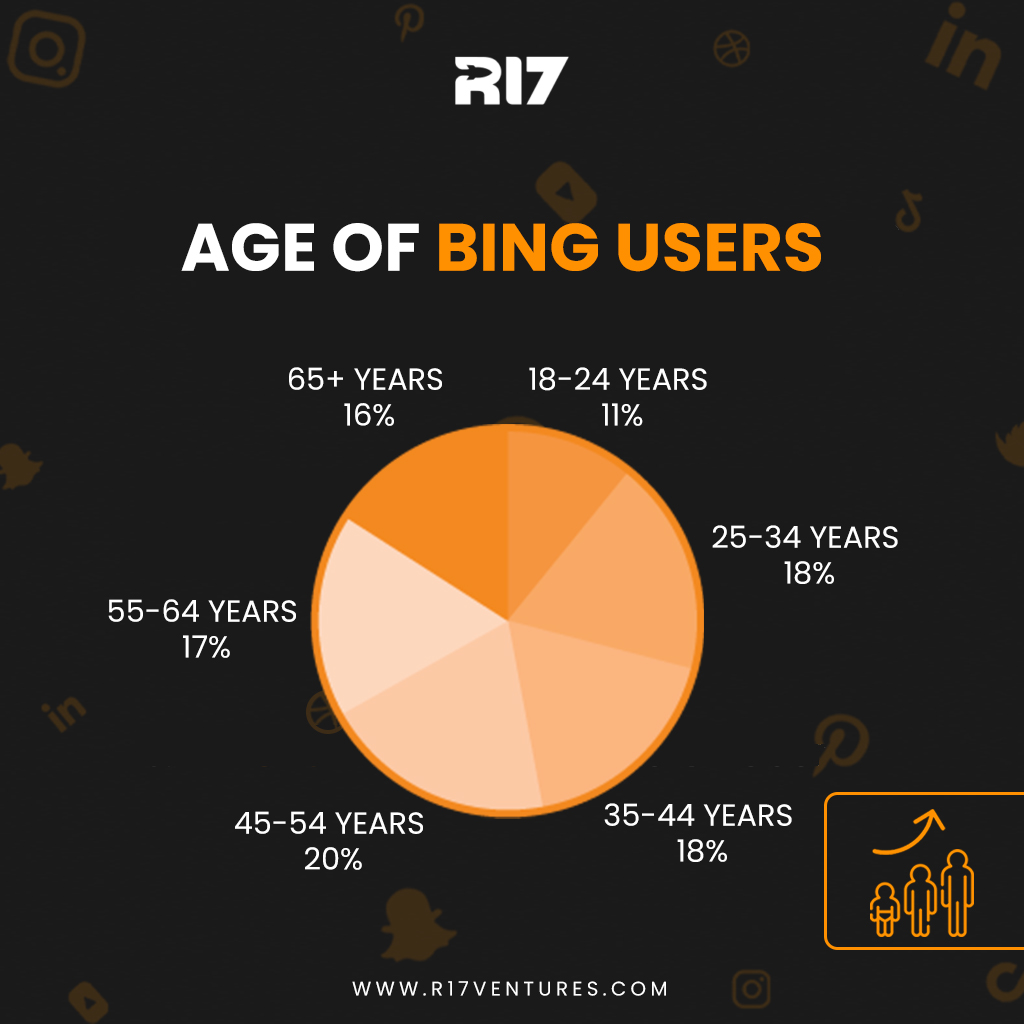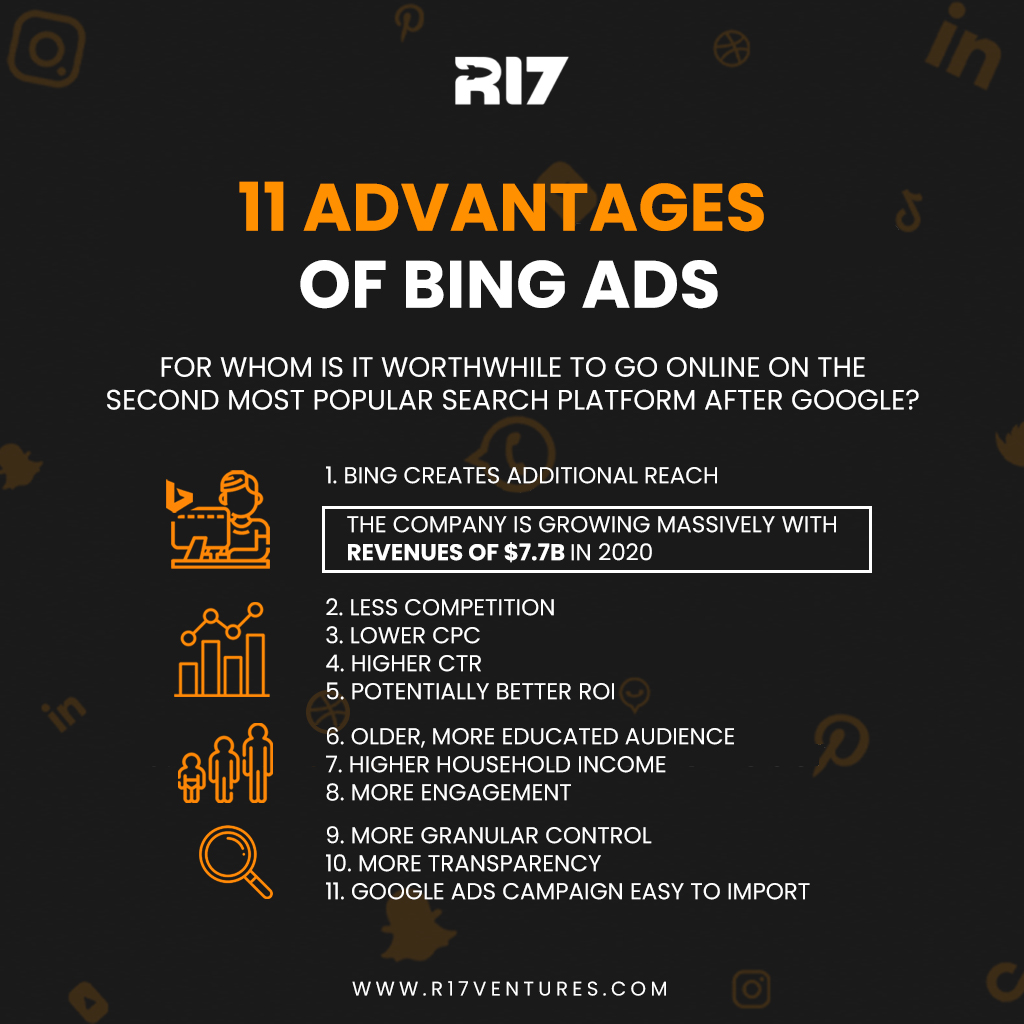When it comes to PPC (pay-per-click)advertising, Google Ads comes to mind immediately. It is often forgotten that Google is not the only search engine in the wide world of the Internet. So what about the search engine rivals Bing? For whom is advertising on the lesser-known platform worthwhile? And does it offer enough reach, targeting options and conversions? We take a closer look at all of this in this blogpost.
Bing Ads vs. Google Ads: The pros and cons of each platform
While many advertisers see the two platforms as competitors, they actually work best together, hand-in-hand.Google undoubtedly has the largest share of the search market, but Bing advertising should not be underestimated. Instead of Google Ads vs. Bing Ads, marketers should think more about Google Ads plus Bing Ads. Let's take a look at the relationship and dynamics between the two powerful advertising platforms. And most importantly, how best to use them together. The concept behind both platforms is the same. Both are pay-per-click advertising platforms designed to help your business reach specific audiences, drive traffic, and increase sales.At the same time, each platform has specific features and benefits, that make them unique and advantageous over the other. Here's a little insight into each platform before we highlight the differences between the two.
Google Ads
With a market share of over 94 percent, Google is not only by far the most used search engine in Switzerland, the provider is also the market leader worldwide. Google Ads consists of two advertising networks:
· The search network: Advertisers create text ads that appear on the search results page (SERP).
· The Display Network: Advertisers create display ads that appear on a large number of websites across the internet
Bing Ads
Bing belongs to Microsoft and the tech giant, in turn, has three search engines: Bing, Yahoo and AOL. So if you advertise on one platform, your ad will actually appear on all three platforms. Google is of course by far the largest search engine. In Switzerland, Bing had a market share of 3.7 percent in 2020, putting it in second place behind Google.
Bing and Google Ads in comparison
Let's see how Google Ads and Bing Ads compare in some basic aspects like display URLs, description text, keywords and CTR. Display URL, Description Text and Keywords Google and Bing both show display URLs below the ad headline and allow 90 characters in the description field. Both Google and Bing offer a keyword research tool, broad search matches, and negative keyword targeting. The main difference between the two platforms is that the volume of traffic for keywords on Bing is much lower. Sitelink Extensions Like Google Ads, Bing PPC offers advertisers the ability to add additional information that can persuade searchers to click through. These additional links may vary from pricing, demos, content downloads, free trials and more vary. Not every paid search ad is guaranteed to show sitelink extensions. So when they are displayed, they attract the user's attention more because the entire ad is much larger than others in the SERP list.
Who Offers the Better Click-Through Rate?
Since Yahoo and MSN both offer financial reports, Bing ads tend to have higher CTRs for vertical searches in the shopping and financial resources section. That's because you'll reach highly interested prospects in these areas on the Bing platforms, get more engagement and, as a result, have a higher CTR.
Reach: Google Ads vs Bing Ads
It is obvious that Google dominates the search engine market and therefore has a larger search volume and more reach.But Google is far from the only search engine worth investing in. Let's look at the numbers:
· The Bing network is growing massively with a revenue of $7.7 billion in 2020.
· Bing now has a 14% market share of desktop search engines
· 14.6 billion monthly searches are carried out via the Bing network
· Over 1 billion uniques earchers use the Bing Network
The most significant fact is that Bing Ads reaches 63 million searchers that Google Ads does not. So not using Bing Ads isa significant amount of missed opportunity.
Who actually uses Bing?
In addition to increased visibility, Bing enables advertisers to reach older and more educated audiences. Almost three quarters of Bing users are over 35 years old. As the pie chart shows, nearly 40% of the Bing network is between 35 and 54 years old. So if you're targeting younger generations, you probably shouldn't invest in ads on Bing, but rather social media ads on platforms like tik tok and Instagram switch. However, if your business is targeting older demographics, Bing is the ideal advertising platform for your business.

Additionally, 38% of the Bing network has a household income of over $100,000, and almost half of the network has a household income of $75,000 or more. In addition, 52% of Bing users are business decision makers, 23% of whom are executives.
If your company is active in the B2B sector, you should not ignore Bing in your advertising. So, despite the fact that Google Ads reaches more people and has a higher search volume, Bing allows you to reach an even wider audience - a specific customer demographic - and thereby get even better results than Google Ads alone.
Advertising costs: Bing Ads vs. Google Ads
What Bing lacks in volume, it often makes up for in performance. Although budgets vary by industry and advertiser, Bing Ads spend is only 20-35% of the equivalent of their Google Ads campaign. This is because Bing's PPC has much less competition for advertisers bidding. So clicks are cheaper and advertisers get more for every CHF spent. However, when comparing the costs of each ad platform, keep in mind that Bing and Google don't always get the same traffic. Bing Ads CPC may be lower, but the quality of the traffic is also lower, so you end up paying more for a conversion than Google Ads. But the opposite can also be the case: with the right traffic,Bing's PPC advertising can generate more revenue at a lower CPC. And the bottomline is that with less competition on Bing, it's easier to get the traffic you need at a low cost, resulting in better ROI. By the way, there are two budget types in the Bing ad platform:
· Daily: Targeted daily limit for PPC ad spend (actual amount may be slightly higher or lower).
· Divided: Allows you to set up multiple campaigns with a shared budgets

More benefits with Bing PPC Ads
Not only an older, higher-income target group and the lower competition speak for Bing Ads. A lower cost per click(CPC) and potentially better ROI also make Microsoft interesting as an advertising platform. Here are 4 more benefits of paid ads on Bing.
1. Easily import your Google Ads campaign
After creating a Bing Ads account, the platform offers advertisers the option to import their existing Google Ads campaigns directly into Bing Ads. With just a few clicks, your campaign is ready to go, without having to create everything from scratch. Just note the differences between the two search engine providers and make sure you adapt your ads to optimally address your correct target group.
2. Increased granular control at the adgroup level
Bing offers more granular targeting at the ad group level. Google, on the other hand, only allows advertisers to limit their campaign-level settings to
· network
· location
· Ad Scheduling
· ad rotation
· language
· Etc.
3. More transparency
Bing is completely transparent in disclosing details about its search partners, allowing advertisers to see exactly where their traffic is coming from. The platform provides detailed reports on each search partner's performance in a campaign, including details on all metrics, from impressions to conversions. In this regard, Google is only planning improvement steps in the course of its next year Federated Learning of Cohorts (FLoC).
4. Higher engagement and conversion rates
Bing users who click PPC ads tend to be more engaged with the websites and landing pages they are taken to after clicking. They also convert at much higher rates. A study by Search Engine People found that in the automotive industry, for example, user conversion rates are 10% to 56% higher than Google ads. So, depending on the industry, it pays to keep an eye on the stats.
What are the main differences between Google Ads and Microsoft Advertising?
It doesn't take much effort to import your campaigns from Google Ads directly into Microsoft Ads. However, the most common mistake many advertisers make is that they optimize Bing Ads in exactly the same way as their Google Ads account. Because there are several differences between the two advertising platforms that you need to be aware of in order to better optimize your campaigns. Here we present the three most important differences between Google and Microsoft that you should know in order to make the right decisions.
Ad Scheduling
One way to target your ads, or even make specific bid adjustments, is through ad scheduling. You can choose what time of day and what day of the week you want your ads to appear. You can also schedule times to make specific bid adjustments. However, we do not recommend making the same ad plan adjustments in both Google Ads and Bing Ads by default. Remember that these are two different channels. So you need to be clear about how ad scheduling works for each channel. You should also review the dates to see what works best for your account. When you edit your ad plan in Google Ads, Google reminds you what time zone your account is in. That's because your ad plan in Google is based on the time zone you selected when creating your Google Ads account. So, for example, if your account is set to the United States and you want to change the ad times to 8:00 AM to 5:00 PM, then you need to keep in mind that users in the Eastern Time Zone (EST) will see the ads from 11:00 AM to 8:00 PM. Ad scheduling works differently with Bing Ads because with Microsoft advertising, ad scheduling is based on the location of the person viewing the ad. That way, the same advertiser can still target the entire United States, restricting hours to 8 AM to 5 PM, and not have to create multiple campaigns to run them.
Targeting Options for Search Partners
Both Google Ads and Bing Ads have search partner networks. These are other websites that allow advertisers to extend the reach of their search network ads beyond the main domains of Google.com and Bing.com. There are a few differences between the channels in this area. The search partner networks are different between Google and Microsoft, and the way we can target each network is also different. Google's search partners are also set at the campaign level. At Bing, we can adjust our ad network distribution at the ad group level. The Google search partner network includes hundreds of websites as well as other Google partners such as e.g. YouTube. By default, Google automatically includes your campaigns in the "Search Partners" setting on. If you're segmenting your campaign data and find that your search partners are underperforming, you can remove partners and save settings with just two clicks. Targeting search partners on Google is either an "all in" or "all out" feature. You can not only target the search partners in Google. If you adjust your ad distribution settings in Microsoft Ads, you can see that your ads will appear on the AOL and Yahoo networks in addition to Bing. Unlike Google, there is no option to target your search network ads only to Bing.com. Even if you only wanted to target search network sites, you still have to choose the option of Bing, AOL and Yahoo together. With Bing Ads, you also have the option to separate your partners into "owned and operated" and "syndicated search partners". Now, if for some reason you see that one of the partner options is performing significantly better than the others, you have the option to use a "target only" targeting method for your ad groups. So there are big differences in how you can optimize your campaigns to maximize performance on those channels as much as possible. -Use targeting method for your ad groups. So there are big differences in how you can optimize your campaigns to maximize performance on those channels as much as possible. -Use targeting method for your ad groups. So there are big differences in how you can optimize your campaigns to maximize performance on those channels as much as possible.
In-market audiences for search
If you want to bid on groups of users who are more likely to be actively researching or ready to buy in a specific product or service category, both Google Ads and Microsoft Ads advertisers can add these "in-market" audiences to their campaigns. The main difference for these audiences between the two channels is the actual options we can add to our campaigns within each channel. Bing has e.g. B. A "Social" category with subcategory options like "Romance & Relationships" or "Takeout & Delivery." Google doesn't have these options. And there are some other categories or subcategories that each channel has and the other doesn't. So check if you might have missed it
So, are Bing ads for your business?
The ability to easily export Google Ads account information to Microsoft Advertising is a huge time saver. But that doesn't mean Bing Advertising is a copy-and-paste channel. You won't get nearly as much traffic with Bing Ads as you will with Google. But the web circuit on the Microsoft offshoot is associated with higher positioning, less bidding competition and generally lower costs per click. Depending on the industry and target group that your online business wants to address, the ideal advertising strategy is to use both platforms simultaneously. Especially if your prospects are in the older demographic group. Google Ads may rank first when it comes to digital ads. But Bing is perfect to complement your PPC strategy and fill gaps in your online presence. With Bing Ads, you can expand your reach into new and unique territories. Would you like to try Bing Ads for your online business, but you don't dare to do it yourself? We at R17 Ventures will be happy to help you create a campaign and show you the individual potential for your business.

